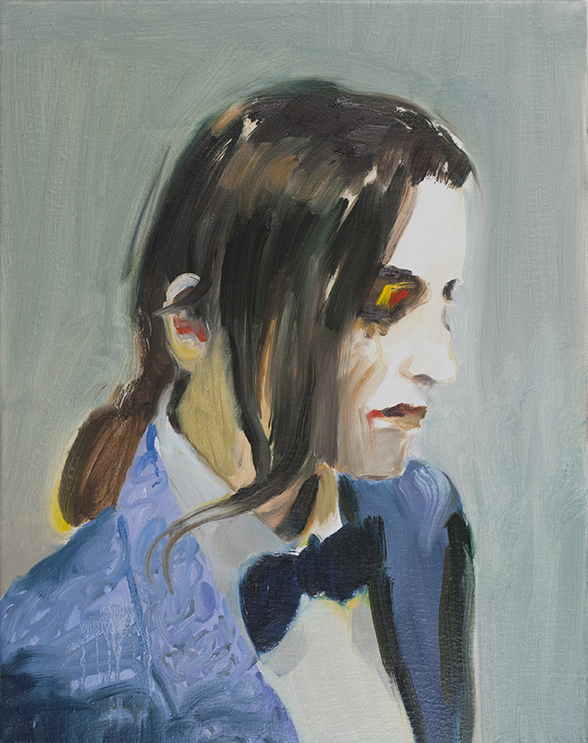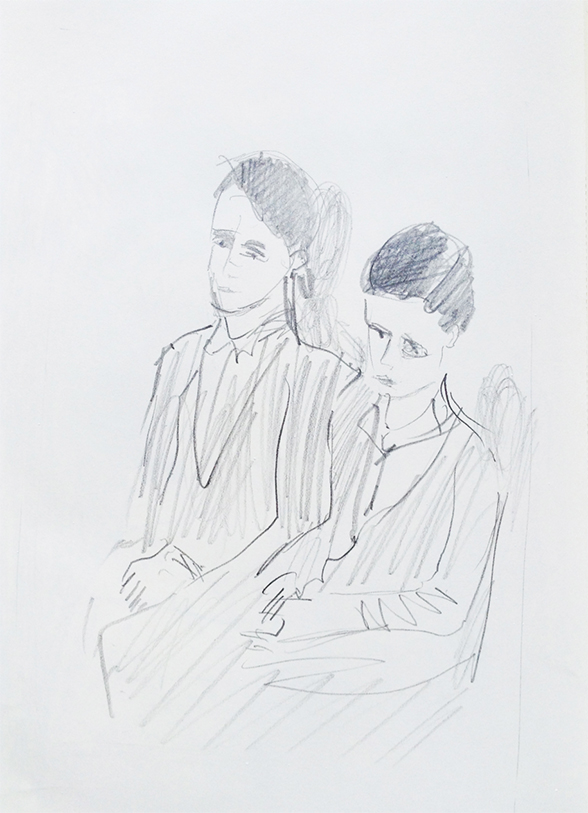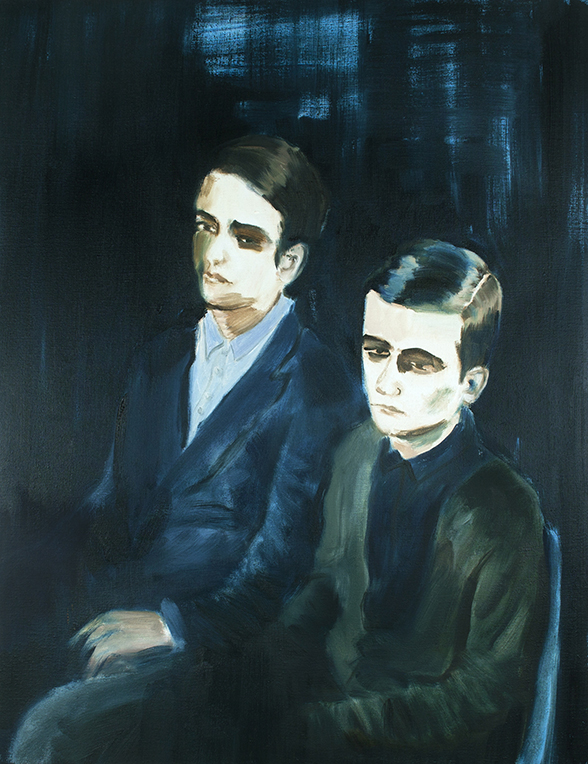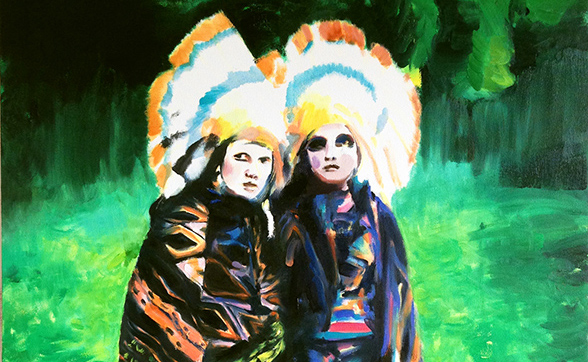What does it mean to be a painterly painter?
Posted on 23 May 2016
Lindsey Bull, section of Glade, 2015. Photo courtesy of the artist
What exactly does the expression ‘painterly’ really mean? Manchester-based painter and Liverpool Biennial Associate Artist, Lindsey Bull, was left contemplating this question following the Speed Meet event held at Bluecoat last month. The purpose of the evening was to introduce the ten artists based in the North-West that have been selected to take part in the programme, and to provide people with a flavour of their work. Here Bull reflects on some of the ideas and questions that came out of the rapid succession of conversations that arose.
Liverpool Biennial’s Speed Meet event was a merry-go round of new faces every five minutes for an hour. At the sound of a bell, each group moved tables to begin speaking to the next artist. Each group always had new questions and different points of view from the last. Amongst insightful comments around subject matter and meaning within my work, there was also much talk about its 'painterliness'. I found this really interesting and began to think more about the notion of a work being painterly and what defines this quality.

Lindsey Bull, Bow Tie, 2015. Photo courtesy of the artist
Subsequent debates and further consideration have led me to think that one understanding of the term is something that shows and celebrates its medium. In painting, this may be the revealing of the manipulation of paint and making use of its sensorial properties. However, something that has a been made with paint does not necessarily presuppose it to having a painterly quality. Conversely, painterliness is also something that can extend beyond painting into other mediums. I think Derek Jarman's short film A Journey to Avebury (1971) has painterly qualities. Shot on Super 8mm film, the psychedelic colours mix with the graininess of the film to create the ethereal presence of the Avebury standing stones.

Lindsey Bull, drawing for Statues. Image courtesy of the artist
Through my painting process, which often involves making a drawing and a watercolour to begin, I am thinking about how to use the quality of paint which is connected to the notion of painterliness. I want to utilise the paint’s materiality to create a psychological state within my work. Mark-making and manipulation of paint are, for me, a way of transferring meaning and expression.
"I want to utilise the paint’s materiality to create a psychological state within my work."

Lindsey Bull, Statues, 2015. Photo courtesy of the artist.
Drawing is also an important way for me to think about the image I want to paint. In the preparatory drawing for the work Statues, I was working through ideas of painterly qualities and emotional resonance, ideas I wanted the final piece to have. There is a linear expressiveness with drawing that I enjoy. I also made a preparatory drawing for the painting Glade in order to work through the intended composition, tone and shadow of the piece, but also the character of expressiveness that would be expanded upon in the final painting. Expressiveness and painterliness have a symbiotic relationship. Painterliness, for me, is a tool I use to manipulate, to give a certain atmosphere. To open up interpretation or to clarify and give more detail. Either way it can be sublime.

Lindsey Bull in her studio
Lindsey Bull is one of ten Liverpool Biennial Associate Artists – a major programme to develop the international careers of artists based in the North West. The programme is run in partnership between Liverpool Biennial, Independent Curators International (ICI) based in New York, and CACTUS in Liverpool. Work by the Associate Artists will be presented as part of Liverpool Biennial 2016 in the India Buildings.
Liverpool Biennial
55 New Bird Street
Liverpool L1 0BW
- T +44 (0)151 709 7444
- info@biennial.com
Liverpool Biennial is funded by
Founding Supporter
James Moores
